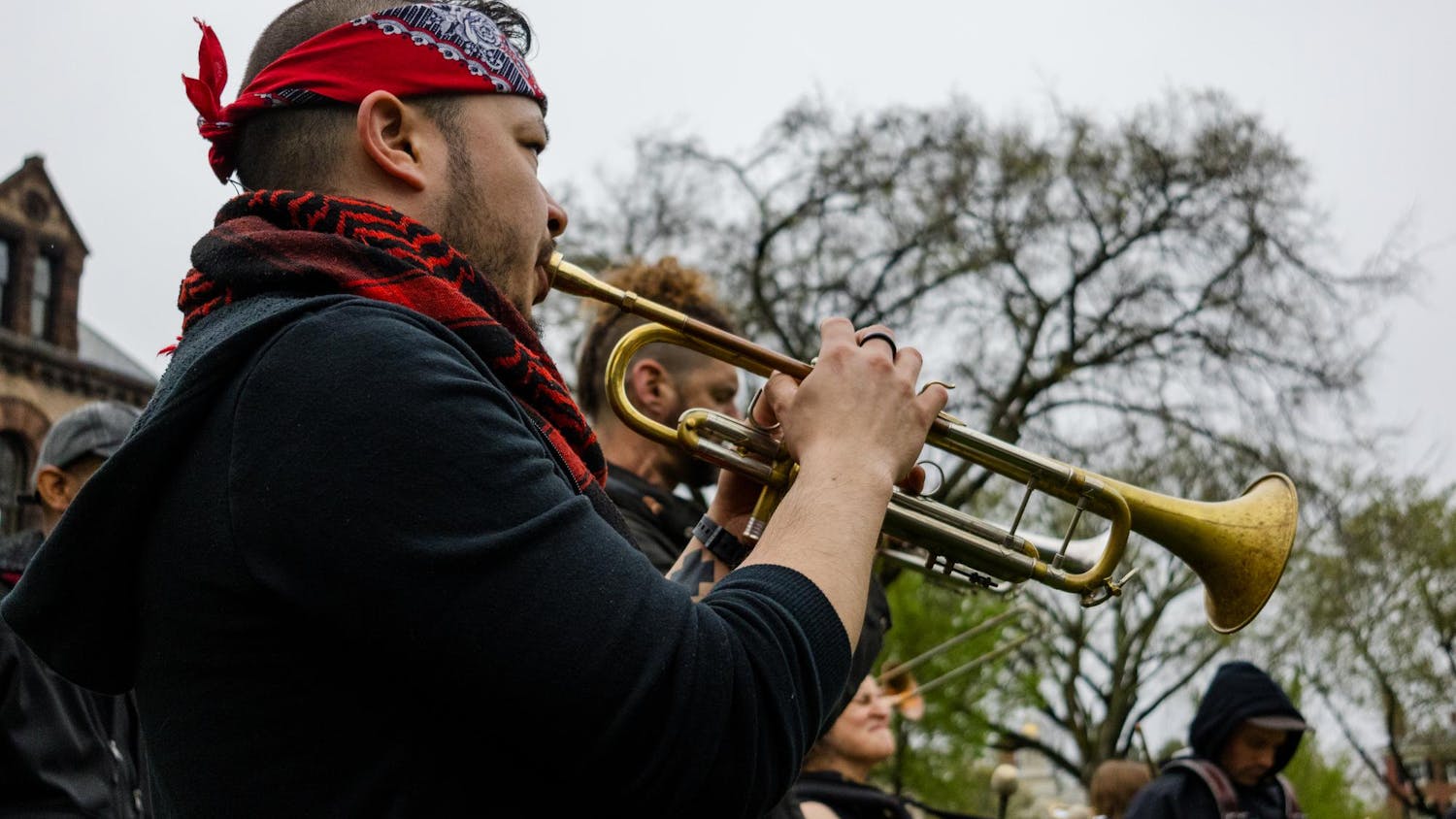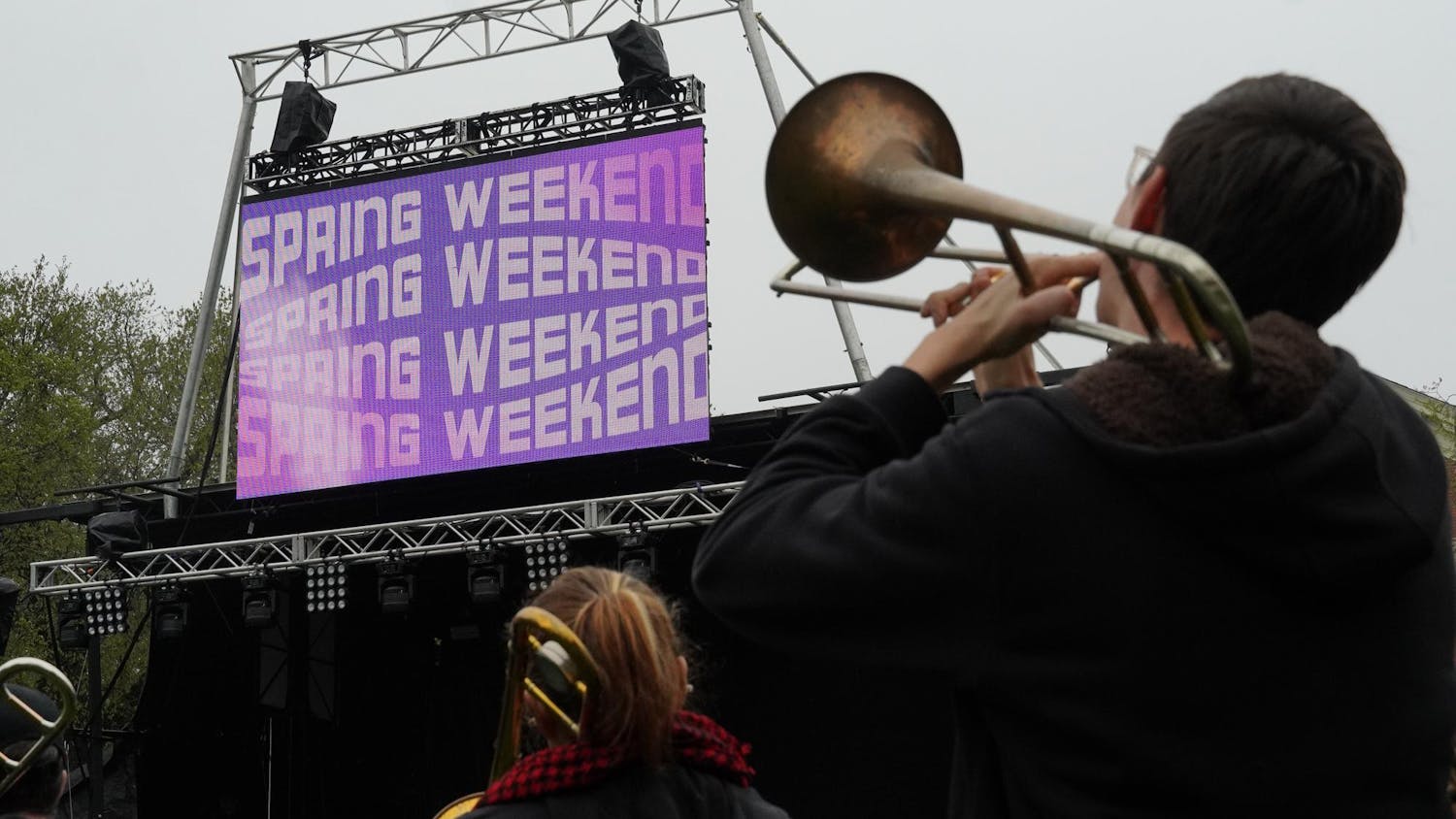Upon entering The Bell Gallery, viewers are immersed in a jumble of sound and sight as sculptures fight for their attention. A decomposing pineapple, giant metal sheets, multicolored citrus fruits and bright screens depicting psychedelic oceanic images are just a few of the artworks on display.
On Feb. 20, the List Art Building’s David Winton Bell Gallery officially opened to the public with a new installation by award-winning French-Caribbean artist Julien Creuzet. Free and open to the public until June 1, the exhibition aims to spotlight conversations about colonialism and Rhode Island’s historical role in the brutalities of the transatlantic slave trade.
First shown at the 60th annual Venice Biennale exhibition in Italy, Creuzet’s installation is titled: “Attila cataract your source at the feet of the green peaks will end up in the great sea blue abyss we drowned in the tidal tears of the moon.”
The title “is poetry,” Creuzet told The Herald. “And poetry, for me, is an artwork, like a sculpture, a painting, a performance.”
Creuzet believes that the exhibition’s title is artistic because everyone’s imagination interprets it differently, adding that he has “no expectation“ about the audience’s interpretation.
“When you open your email and you receive communication from The Bell Gallery, you (also have) the artwork,” Creuzet said. “It’s not only about image, it’s about how a text can affect you.”
Creuzet is based out of Paris, but spent a large portion of his childhood in the Caribbean island of Martinique, which serves as inspiration for much of his work. Growing up in the birthplace of poets Aimé Césaire and Édouard Glissant, Creuzet views himself as carrying on their traditions of philosophical thinking through artwork, he said.
Much of Creuzet’s work, including this exhibit, references legacies of colonialism and the African diaspora. Notes from the gallery highlight this as one of the reasons why Creuzet’s work is exhibited in a place like Providence.
According to Brown’s Slavery and Justice Report, Rhode Island played a “leading role” in the transatlantic slave trade. “In all, about 60% of slave trading voyages launched from North America — in some years more than 90% — issued from tiny Rhode Island,” the report reads.
The University’s history is also linked to legacies of slavery — University Hall was built by enslaved peoples, while the Brown family themselves owned slaves and contributed to the slave trade.
According to the gallery notes, the “multisensorial” project is “a liquid ecosystem of voice, texture, sound and moving image,” inspired by performance art originating from the African diaspora.
As part of the exhibition, the List lobby is home to two massive steel floor structures, which viewers are encouraged to walk across. Speakers play audio recordings of art curator Cindy Sissokho reading texts that have been influential to Creuzet, such as Hortense Spillers’s “Mama’s Baby, Papa’s Maybe: An American Grammar Book” and excerpts from Paul Gilroy’s “The Black Atlantic.”
The Bell itself has also been transformed, with low, bluish lighting and projected ocean scenes evoking an aquatic feel.
The exhibition features what the gallery notes refer to as a “translinguistic soundscape” of songs written by Creuzet, primarily in creolized French. The lyrics, translated into Portuguese, English and Spanish, are visible on a flatscreen in the back of the gallery.
Video animations projected on screens throughout the gallery also portray the sea through a mythological lens, with one scene described as “mermaid figures that reflect African cosmologies away from the hyper-sexualized fantasies of European sailors.”
Part of Creuzet’s installation included last Thursday’s dance performance in the Lindemann Performing Arts Center, titled “Algorithm ocean true blood moves.” Choreographed by dance artist Ana Pi and performed by dancers from The Ailey School in New York, the piece is designed to complement Creuzet’s installation.
The dance featured pole-shaped sculptures wrapped in layers of found objects, string, rope and twine, which were installed in The Bell gallery following the show.
Elliot Stravato ’27 works as a Bell Gallery monitor and was one of the first at Brown to see the installation.
He noted that Creuzet’s piece was a departure from previous Bell Gallery showings because “it’s so immersive and it really transforms the space in a way that sort of more traditional painting on walls doesn’t. It was just exciting to see The Bell Gallery so changed,” Stravato said.
“I think it’s cool because it’s kind of obscure,” Stravato said. “It commits so heavily into the world that it’s creating and the overall ambiance, but also you’re not entirely sure what that is and to what end.”

Talia LeVine is a section editor covering arts and culture. They study Political Science and Visual Art with a focus on photography. In their free time, they can be found drinking copious amounts of coffee.





